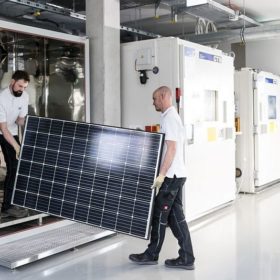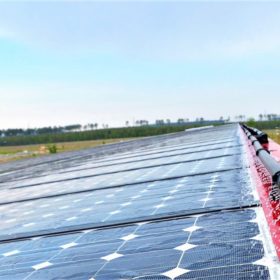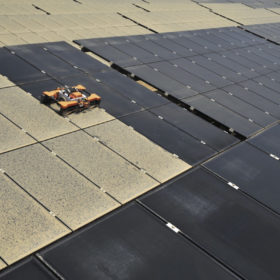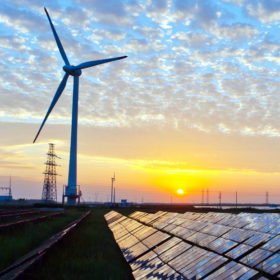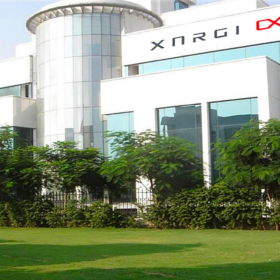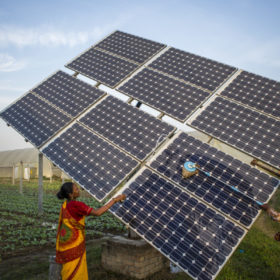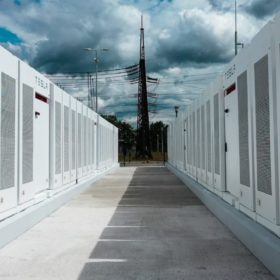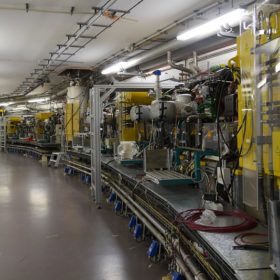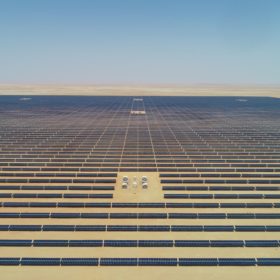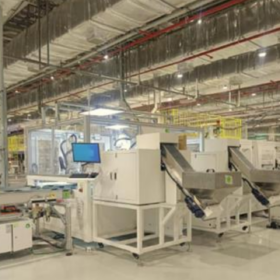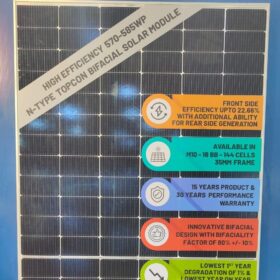Preventing PID at 1500 volts
Scientists in Germany have developed a “heavy duty” test to provide insight into the long term effects of potential induced degradation in PV modules. The tests go well beyond those established by IEC standards and seek to guide manufacturers and investors on the best choice of materials – encapsulants in particular – when it comes to long term PID resistance.
Cooling down PV panels with water
France’s Sunbooster has developed a technology to cool down solar modules when their ambient temperature exceeds 25 degrees Celsius. The solution features a set of pipes that spread a thin film of water onto the glass surface of the panels in rooftop PV systems and ground-mounted plants. The cooling systems collect the water from rainwater tanks and then recycle, filter and store it again. The company claims the technology can facilitate an annual increase in power generation of between 8% and 12%.
The long read: The research behind dust mitigation
Solar PV is surging in the Middle East, due to its sustainability and decentralized nature. But with the ample sunlight of the region comes fine dust, which can sharply reduce power output. Zulfa Rasheed from the Rochester Institute of Technology in Dubai looked at the latest research in the field and found that module-glass coating and robotic solutions appear to be the most promising options when it comes to dealing with dust.
Proposals invited for joint India-South Korea research in renewable energy and green mobility
Proposals must reach the Department of Science & Technology (DST), Government of India, and Ministry of Science and ICT (MSIT) of the Republic of Korea by May 8. Each selected project will be funded for a period of three years.
Cheaper flow batteries with new membrane
US scientists claim to have discovered a membrane which could lead to cheaper large scale flow batteries. The material is an ion-selective, aqueous-compatible polymer with intrinsic microporosity known as AquaPIM and is said to have tunable thickness and high conductivity in aqueous electrolytes.
US based XNRGI opens lithium-ion battery factory in India
Based in Gurugram, the factory is spread over 30,000 sq.ft and can produce 240 MWh of high-temperature battery storage solutions annually. These batteries can charge to 80% capacity within two hours and operate in excess of 55ºC, which makes them suitable for hot, humid tropical climates.
Solar will turn vicious water-energy-climate cycle into virtuous loop
The International Water Management Institute is promoting the Solar Irrigation for Agricultural Resilience (SoLAR) initiative to expand the use of solar irrigation systems throughout Bangladesh, India, Nepal, and Pakistan. Proponents of solar irrigation pumps say that they can have a strong positive impact on groundwater.
Evaluating battery chemistries for grid-level storage
Researchers in China have ranked some of the most commonly used battery chemistries according to parameters deemed important for grid-level storage. The team gave a score in each category and determined a winner – and it wasn’t lithium-ion.
Sweden and India launch a multi-million dollar programme on Smart Grids
The programme—co-funded by Swedish Energy Agency and India’s Department of Science & Technology (DST)—aims to develop technologies that can be commercialized after two years. While SEA has committed US$2.6 million over four years for research and innovation collaboration with India, DST will also fund a matching investment of Rs 18 crore to support Indian partners.
Speeding up energy storage with pseudocapacitors
Scientists at Germany’s Helmholtz Zentrum Berlin have made a discovery they say could greatly increase the energy storage capacity of titanium-based ‘MXene’ pseudocapacitors, ultimately leading to faster-charging batteries. The group found adding urea molecules between MXene layers increased the material’s storage capacity by up to 56%.
